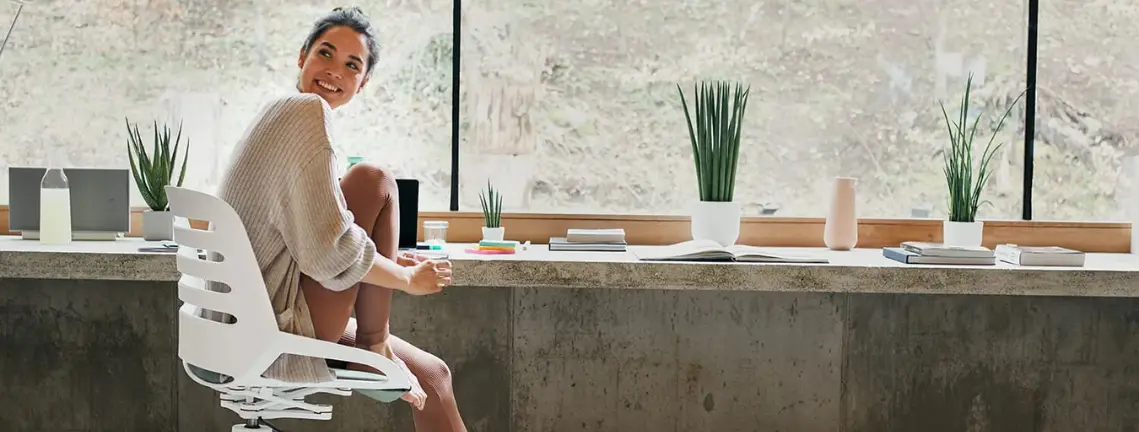How to Plan an Efficient Office Layout


Designing an efficient office layout is vital for any business aiming to boost productivity, employee wellbeing, and overall workplace functionality. An intelligently planned workspace doesn’t just look good - it helps streamline operations, encourages collaboration, and reflects your organisation's culture.
Whether you're setting up a new office or redesigning your current space, this guide will walk you through the best practices, expert tips, and examples to help you plan an office layout that works.
Understand Your Business Needs and Workflows
Before you start moving desks or shopping for office furniture, take a step back and evaluate how your team works. Consider the type of work your employees do on a daily basis. Do they need quiet spaces for focused work, or do they thrive in collaborative environments with open desks and shared tables? For example, creative agencies and tech startups often favour open-plan layouts that facilitate team interaction. In contrast, legal or financial firms might need more private offices or meeting rooms to ensure confidentiality.
Mapping out workflows can also highlight areas where your current layout causes friction. Are employees wasting time walking across the office to access printers or meeting spaces? Are teams that collaborate frequently located far apart? Conducting an internal audit or even a simple survey can reveal these inefficiencies. By aligning your office layout with your business functions, you create a more agile, intuitive space that supports productivity from day one.
Choose the Right Office Layout Style
There’s no one-size-fits-all approach when it comes to choosing the right office layout. The best layout depends on your team’s working style, your industry, and even your brand personality. Here are a few common types of office layouts to consider:
- Open-plan offices are ideal for fostering communication and teamwork. These layouts minimise physical barriers and can create a dynamic energy that suits startups and fast-paced environments. However, they may lead to distractions, so consider integrating quiet zones or acoustic meeting pods for focus-heavy tasks.

- Private offices feature enclosed rooms for individuals or small teams. These are excellent for companies that require privacy or minimal noise, such as law firms, consultants, or researchers. While private offices offer more control over the environment, they can also feel isolating.

- Hybrid layouts combine open spaces with enclosed meeting rooms, breakout zones, and hot-desking areas. This is increasingly popular in modern workplaces with different employee personas, especially in the post-pandemic era, where flexibility and remote work are common.

- Activity-based working (ABW) spaces allow employees to choose where they work based on the task at hand. This approach boosts autonomy and can help maximise space utilisation. Think casual collaboration corners, focused pods, and informal lounge areas - all within one floor plan.

Prioritise Comfort with Ergonomic Furniture
An efficient office is not just about space but also about how it feels. Investing in ergonomic furniture can dramatically improve employee comfort, health, and satisfaction. Adjustable chairs, height-adjustable desks, proper lighting, and keyboard-friendly workstations help prevent strain and fatigue, which in turn boosts productivity and morale.
Choose desks and chairs that support proper posture and encourage movement throughout the day. Provide footrests, monitor risers, and lumbar supports as needed. Remember, a well-designed office layout considers the physical wellbeing of employees as much as the visual appeal.
Example: A Dublin-based tech company recently revamped their layout by replacing all static desks with sit-stand workstations and offering ergonomic task chairs, improving staff satisfaction scores in its post-move survey.
Make Space for Collaboration and Privacy
One of the most common mistakes in office planning is neglecting the balance between collaboration and concentration. While brainstorming sessions and team huddles are vital, so is deep, focused work. Your office layout should reflect this duality.
Incorporate different zones for different purposes. Create open areas with whiteboards, lounge seating, and AV screens for collaborative work. At the same time, offer enclosed meeting rooms, quiet zones, or soundproof pods for tasks that require privacy or silence. Modular furniture and movable partitions can help reconfigure spaces quickly based on daily needs if space is limited.
Tip: Consider adding acoustic panels or sound-absorbing accessories to reduce noise levels in shared areas. Background noise can significantly hamper focus, particularly in open-plan offices.
Don’t Forget Storage and Organisation
A cluttered workspace leads to a cluttered mind. Smart storage solutions are essential to maintaining a clean, efficient office. Allocate storage areas close to where they’re needed - file cabinets near workstations, supply cupboards near printers, and lockers in hot-desking environments.
Incorporate vertical storage to maximise floor space and use cable management tools to reduce visible cords and wires. Go paperless where possible and use cloud storage to reduce the need for physical filing. An organised office is not just easier on the eyes - it also helps streamline daily tasks.
Example: One facilities management company introduced under-desk pedestals with locking drawers throughout its office, reducing desk clutter by 70% and improving staff satisfaction scores in its post-move survey.
Plan for Future Growth and Flexibility
Your current employees' needs may not be the same in a year. That’s why it’s essential to plan your office layout with flexibility in mind. Modular furniture, open areas that can be repurposed, and scalable tech infrastructure can help you adapt to changes without expensive overhauls.
Leave enough space for additional desks or new departments. Opt for furniture that can be reconfigured easily. Flexible layouts accommodate growth and help you respond to unexpected events, like a shift to hybrid working or a sudden team expansion.
Use Natural Light and Interior Design Thoughtfully
Natural light significantly impacts mood, productivity, and overall wellness. When planning your layout, prioritise window access for as many workstations as possible. Avoid blocking light with tall furniture or opaque partitions. Supplement natural light with adjustable LED task lighting for gloomy days or enclosed areas.
In terms of décor, use calming colour palettes, indoor plants, and art to create a pleasant atmosphere. Branding your space with your logo, colour scheme, or values can reinforce company culture and pride among employees.
Incorporate Technology Efficiently
Modern offices run on technology, so your layout must support seamless connectivity. Position power outlets and charging stations where they’re easy to access. Use wireless networks with strong coverage and include smartboards or video conferencing tools in meeting rooms.
Plan for tech zones - such as printing stations, AV-equipped conference rooms, and IT support areas. These should be central enough for access but not disruptive. For hot-desking setups, use dockable monitors and unified tech standards to reduce set-up time.
Conclusion: Good Layouts Lead to Great Work
Planning an efficient office layout isn’t just a design project - it’s a business strategy. A thoughtfully designed workspace improves communication, enhances wellbeing, reduces waste, and fosters innovation. By understanding your team's needs, incorporating ergonomic and technological elements, and planning for flexibility, you create a layout that works for people, not just processes.
Whether you’re building a collaborative open-plan hub or a private, focus-first environment, the ultimate goal is the same: to create a workplace that enables your team to thrive.
---
Need Office Design Inspiration?
Codex offers expert workspace solutions to help businesses create the perfect office environment. Open an account or contact us today to explore office furniture and accessories that enhance productivity and wellbeing.
Latest Posts

Codex Unveils Thrive Collection at Autism-Europe Congress
Codex launched its Thrive by Codex x AsIAm neuroinclusive workplace collection at the 14th Autism-Europe Congress in Dublin. The range features Balance Booths, Privacy Seating, and Movement Chairs, designed to help employers create inclusive work environments.

Codex Celebrates Its Third Annual Environment Week
This year’s Environment Week focused on Zero Waste, featuring Planet Mark, Thorntons Recycling, electric fleet updates, and the launch of the Codex Cares Repair Station, focusing on driving sustainability at work and at home.
STAY IN TOUCH
Trending Posts
Codex Unveils Thrive Collection at Autism-Europe Congress
Codex launched its Thrive by Codex x AsIAm neuroinclusive workplace collection at the 14th Autism-Europe Congress in Dublin. The range features Balance Booths, Privacy Seating, and Movement Chairs, designed to help employers create inclusive work environments.




